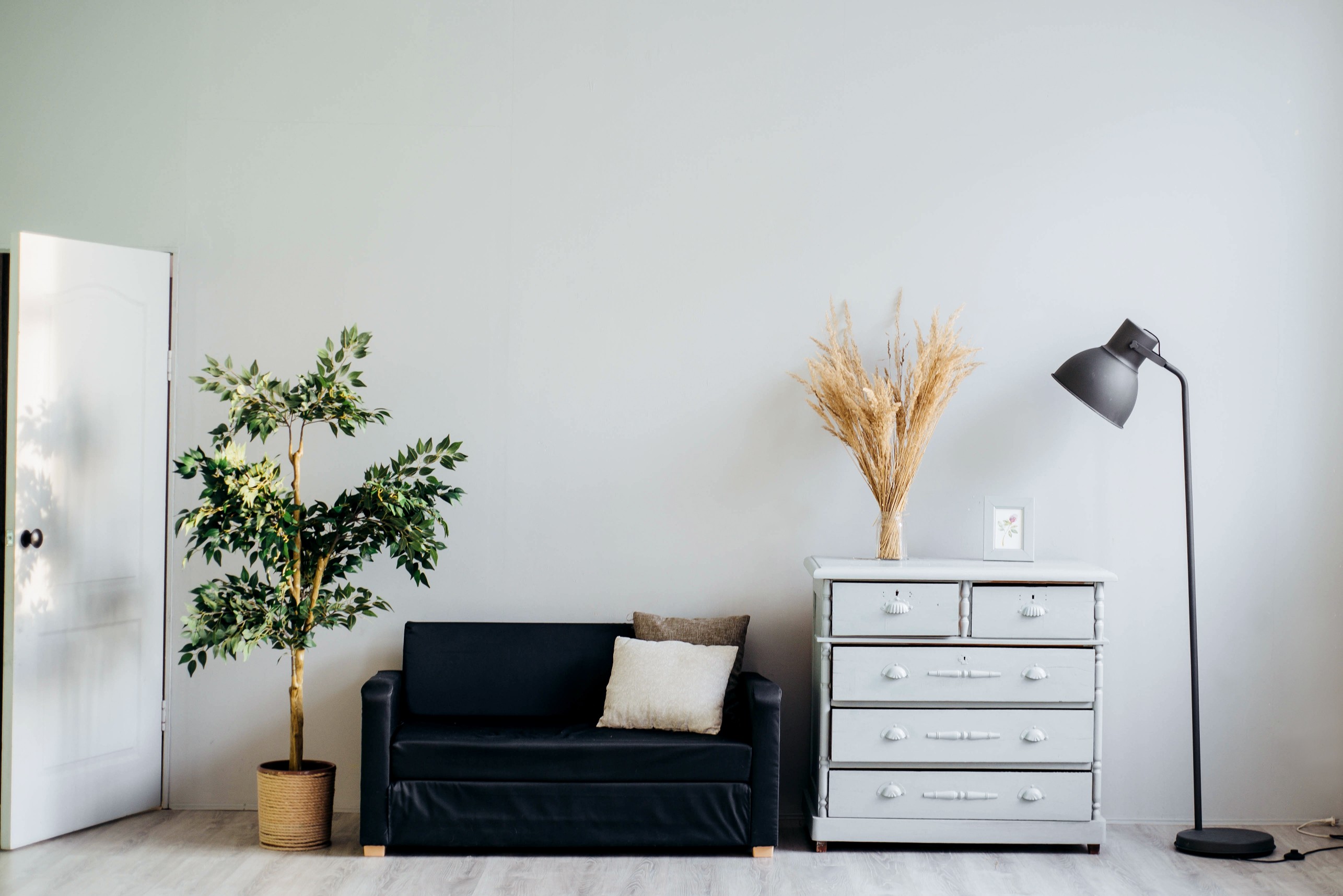Working From Home: 3 Ways To Add A Working Space Into Your Home
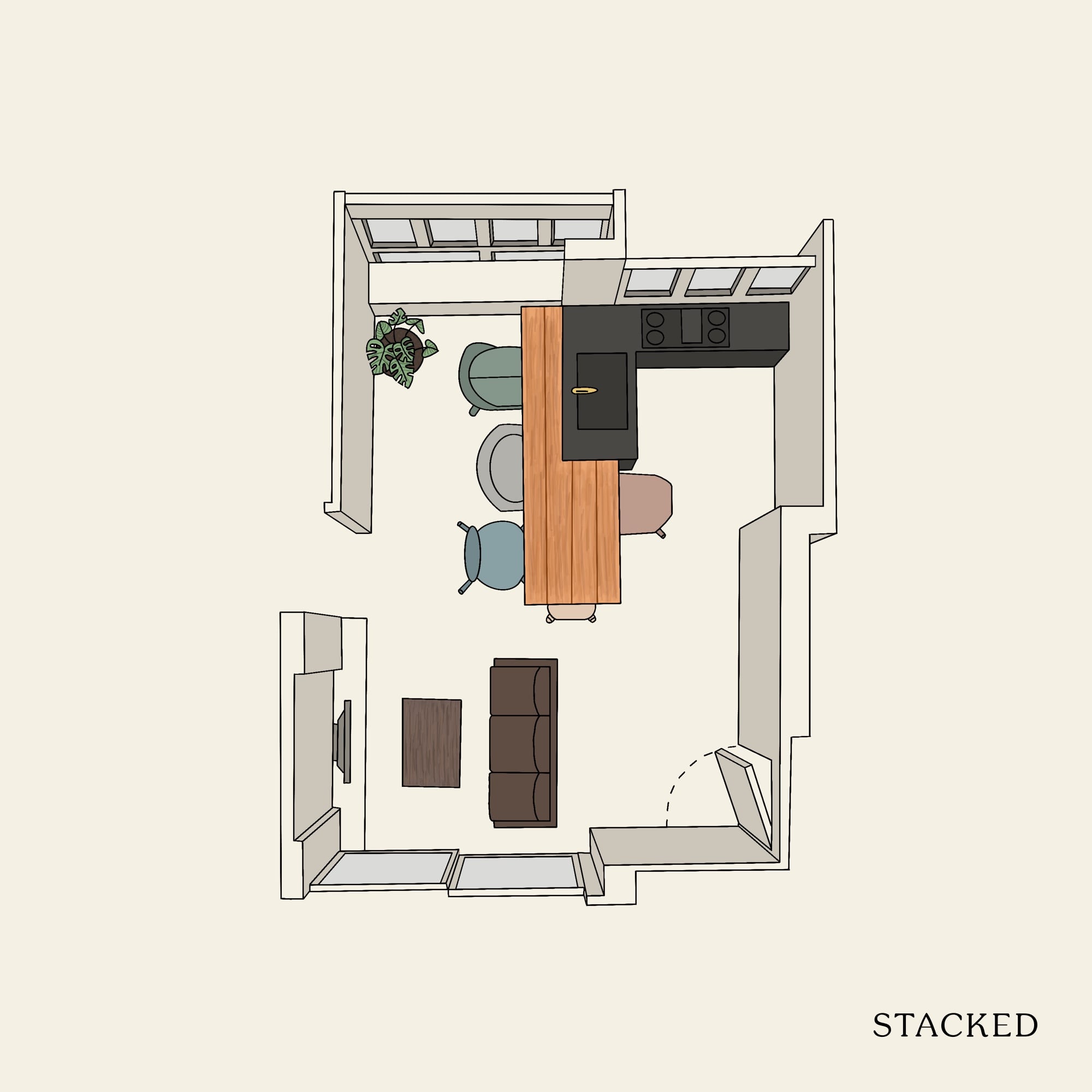
Get The Property Insights Serious Buyers Read First: Join 50,000+ readers who rely on our weekly breakdowns of Singapore’s property market.
You could say that working from home has been an unintended perk from the miserable Covid-19 situation.
It has been a little more than 6 months (where has all that time gone?) since circuit breaker measures were first introduced, and till this day many of us are still either working or studying from home to a certain extent.
In a recent Straits Times article, 80% of the workers interviewed indicated a preference to work from home, or to have more flexible working arrangements. Several reasons include the hassle of daily commute, as well as potential exposure to COVID-19 in their respective workplace. And let’s face it, who wants to wear a mask at work the whole day?
After all, working from home allows you to save on the cost of transit, have more time for yourself and family, and flexibility and control over your own time – the list goes on.
So seeing as many companies are still retaining rotational working structures and that flexible working arrangements are gaining popularity, I thought it might be useful to share with you some ways to make space for a proper working area at home.
Unless you have the luxury of living in a landed home, most people will definitely have to eke out a space to work from home comfortably (and efficiently).
In this article, I will be showing you in greater detail the different ways you could incorporate a working area in your home and the type of furniture you may need. More importantly, to do this in the most cost-effective manner possible, and without investing in any major construction.
Using real-life homes as case studies, let me show you exactly how it can be done.
Let’s get right to it.
#1 Semi-permanent Working Desk
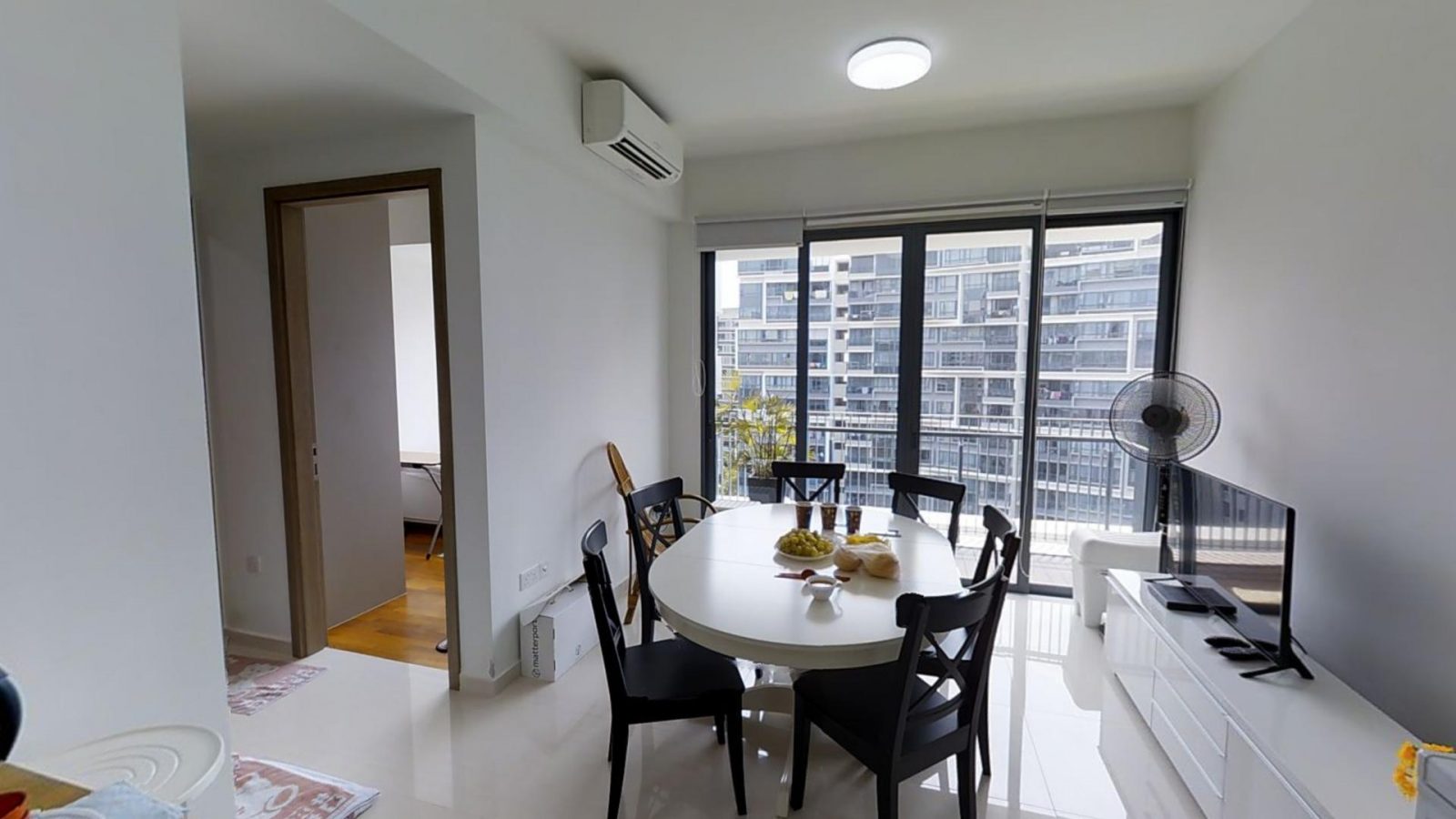
In our first case study of the day, I’ve gone with a mass market condo (The Palette) as this would be a scenario most people are faced with.
As with most newer developments of today, the current space is quite limited. To make things worse, it doesn’t help that the dining set is overly big for the space.
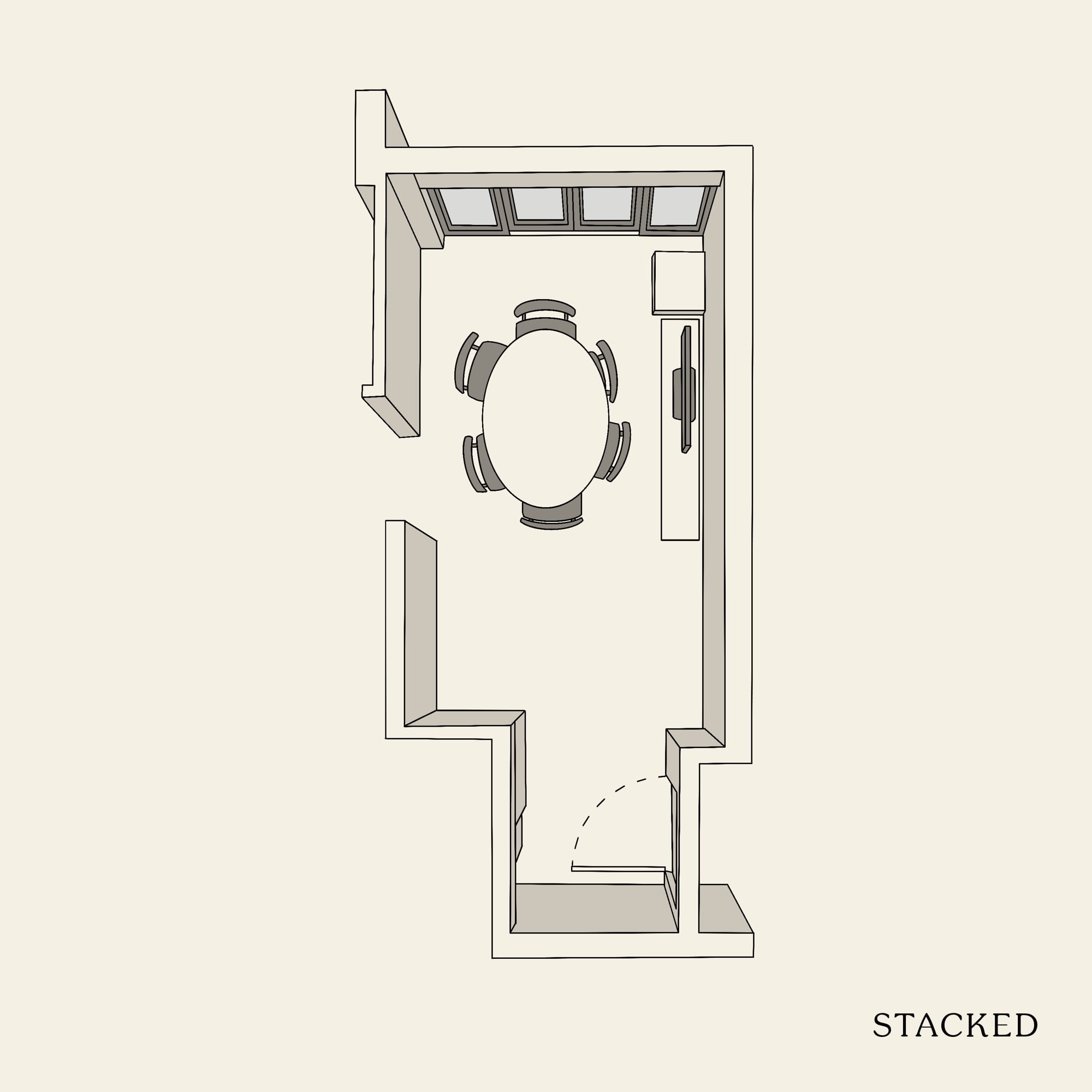
But you’ve spent a bomb on the furniture and are reluctant to change it up for an uncertain scenario of if you are ever called back to work.
So what can you do in this instance if you’d still want to incorporate a working space?
One great way is to install a semi-permanent working area that could easily be stowed away when unused. This not only prevents you or your family members from having to use the dining table as a working space, but also provides a dedicated space to store some office supplies.

Ideally, you’d want the working space to be installed in the corner of the room so that it is out of the usual circulation path leading to other parts of the house.
Style wise it’s quite clear that this home is largely decorated with furniture of monochrome colours and an occasional splash of brown, so as much as possible I tried to stick to that.
The first item I would recommend for a semi-permanent working space would definitely be a wall-mounted, foldable table. The unique point of this table is the fact that it can be converted to a shelf when unused, so you need not clear your office essentials after a day of work. Alternatively (if you were hard working enough), you could use it as a decorative shelf on the weekends instead.
You can also complement the setup with some metal bars to keep larger items such as your laptop in place, and a dedicated wall shelf for more storage options.
Since there are so many chairs in the existing space, you could also use it temporarily for this office area, and throw in a cushion to easily make the space more cosy.
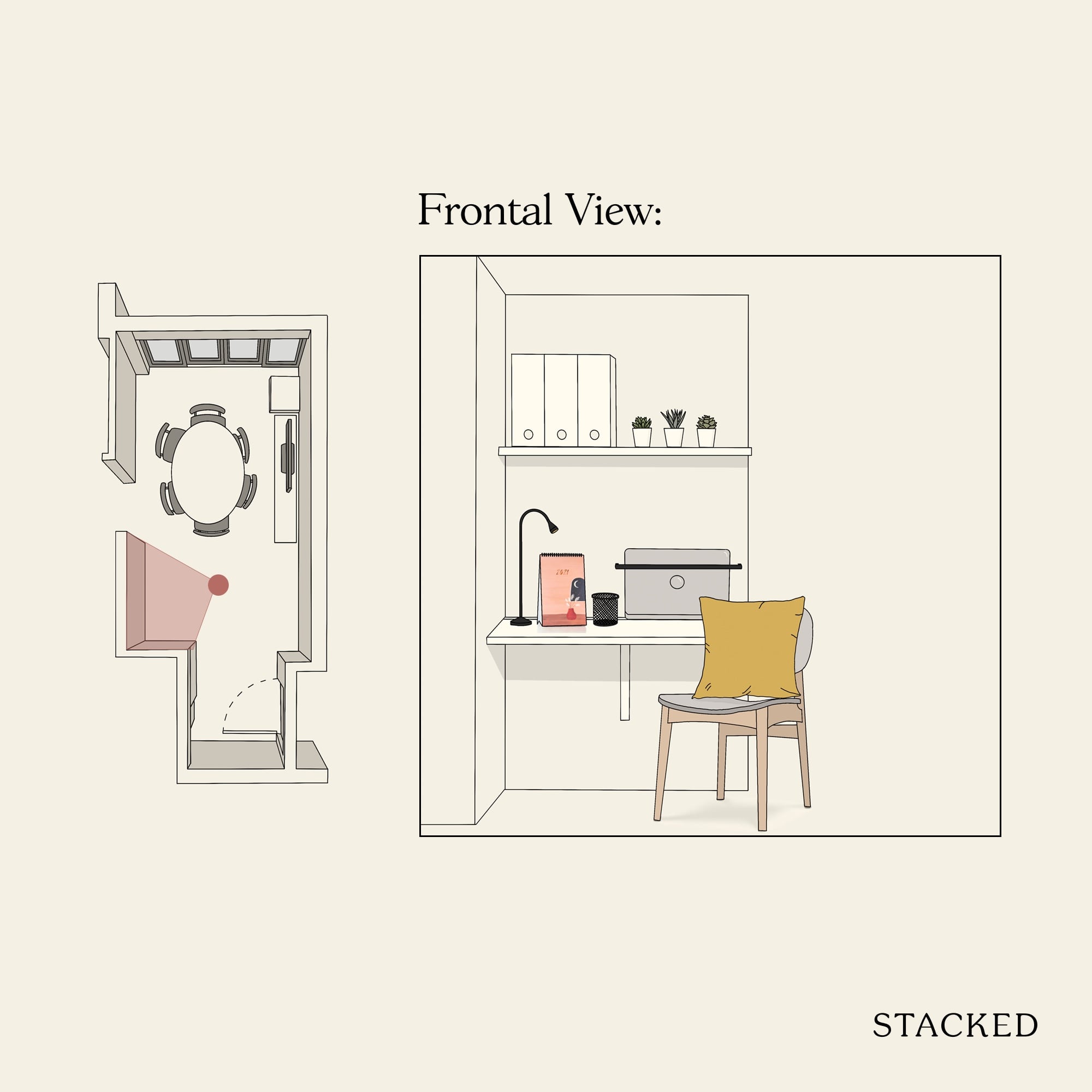
Last but not least, to follow the existing colour scheme within the home, here are some smaller items to consider to have a full-functioning working space:
- Desk lamp for some lighting at night, or if that part of the home does not enjoy natural lighting;
- Pen holder to contain all loose pieces of stationery;
- Desk calendar to note down important calls or appointments;
- Filing compartments to store important documents;
- Notebooks and sticky memos for quick notes;
- and some muted, artificial plants for some semblance of nature.
#2 Permanent Working Desk
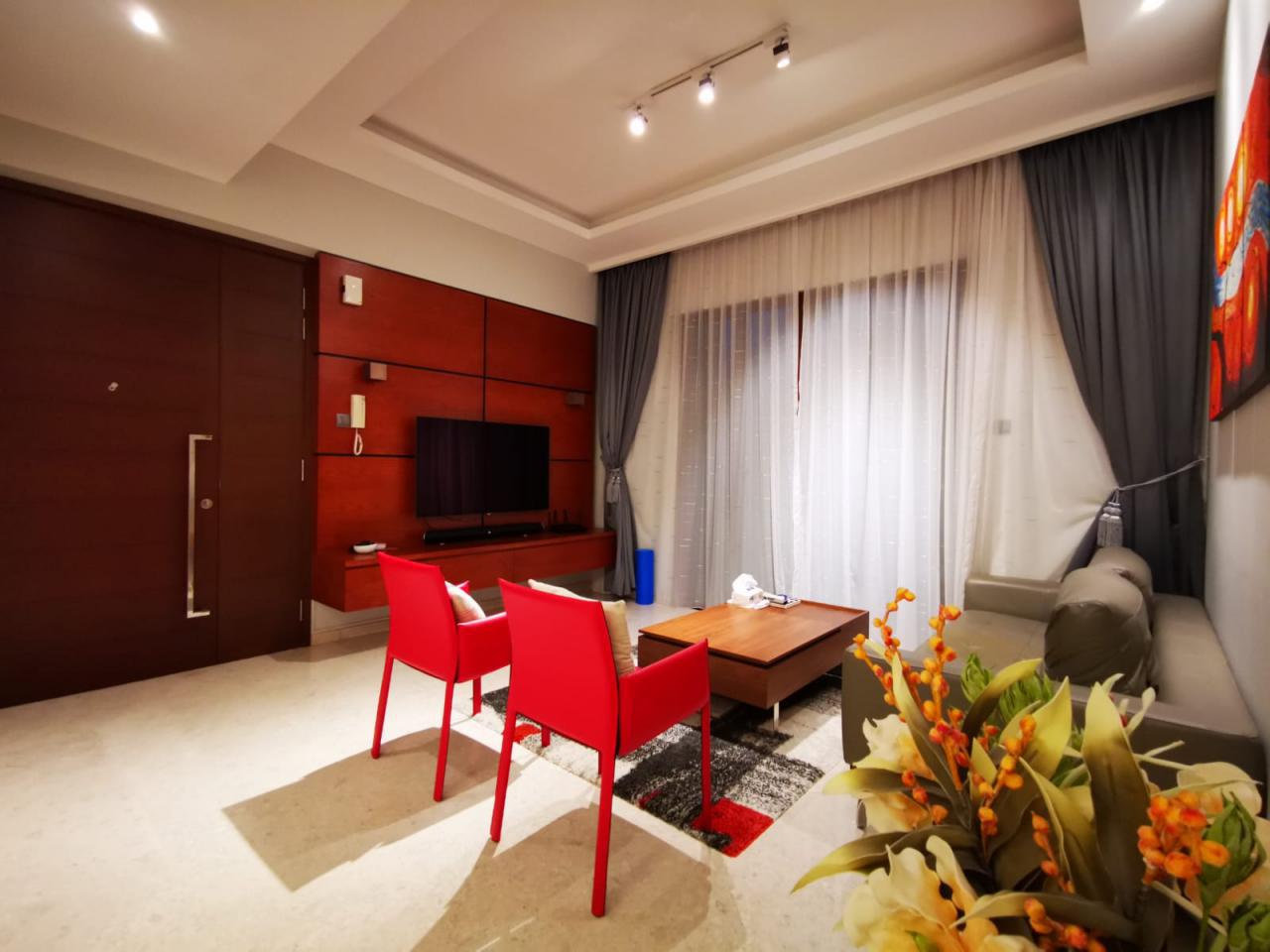
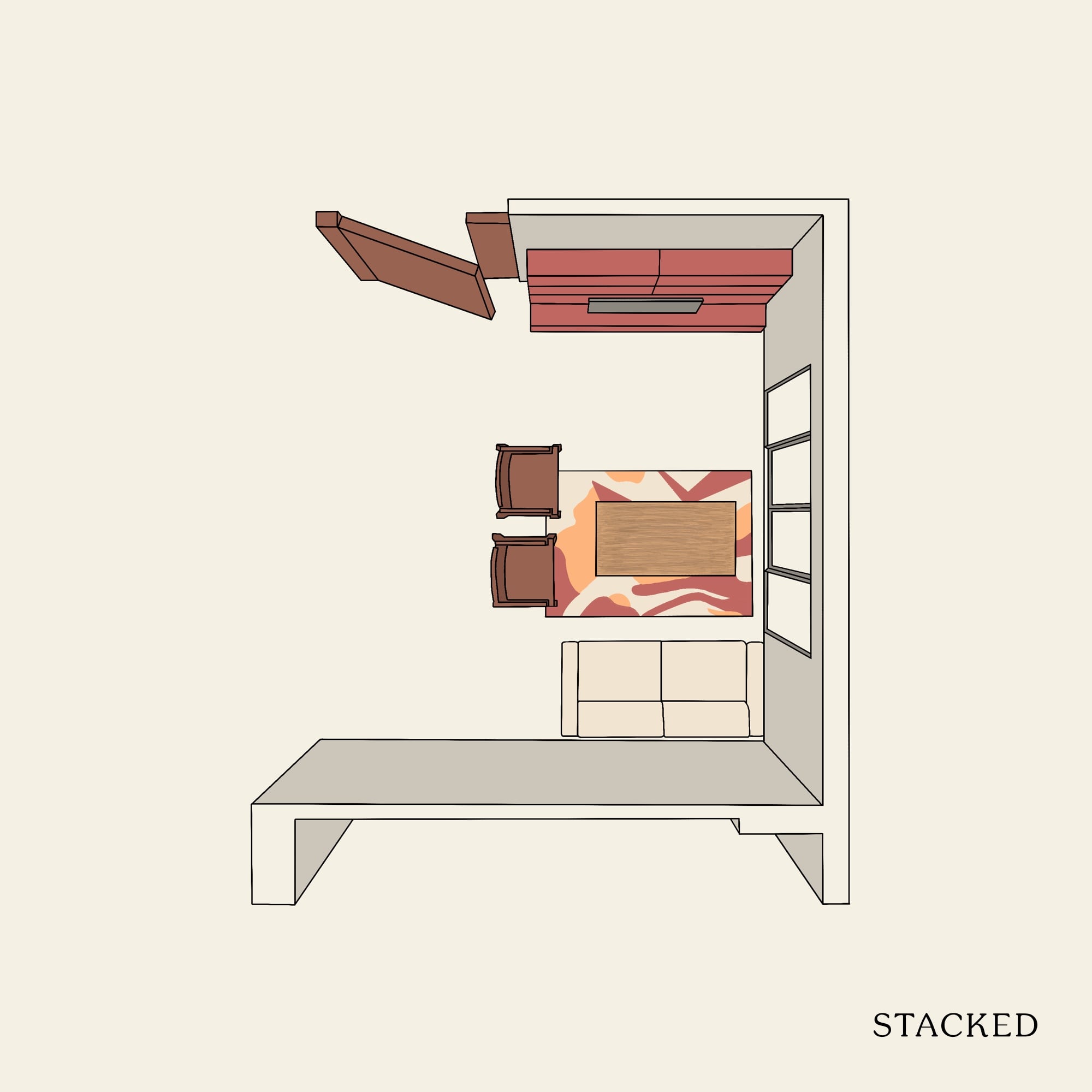
This case is one for those staying in an older resale condo, where units are usually more spacious. In this Cornwall unit, although the home is not entirely minimalist, there appears to be quite a bit of space left that is unutilised.
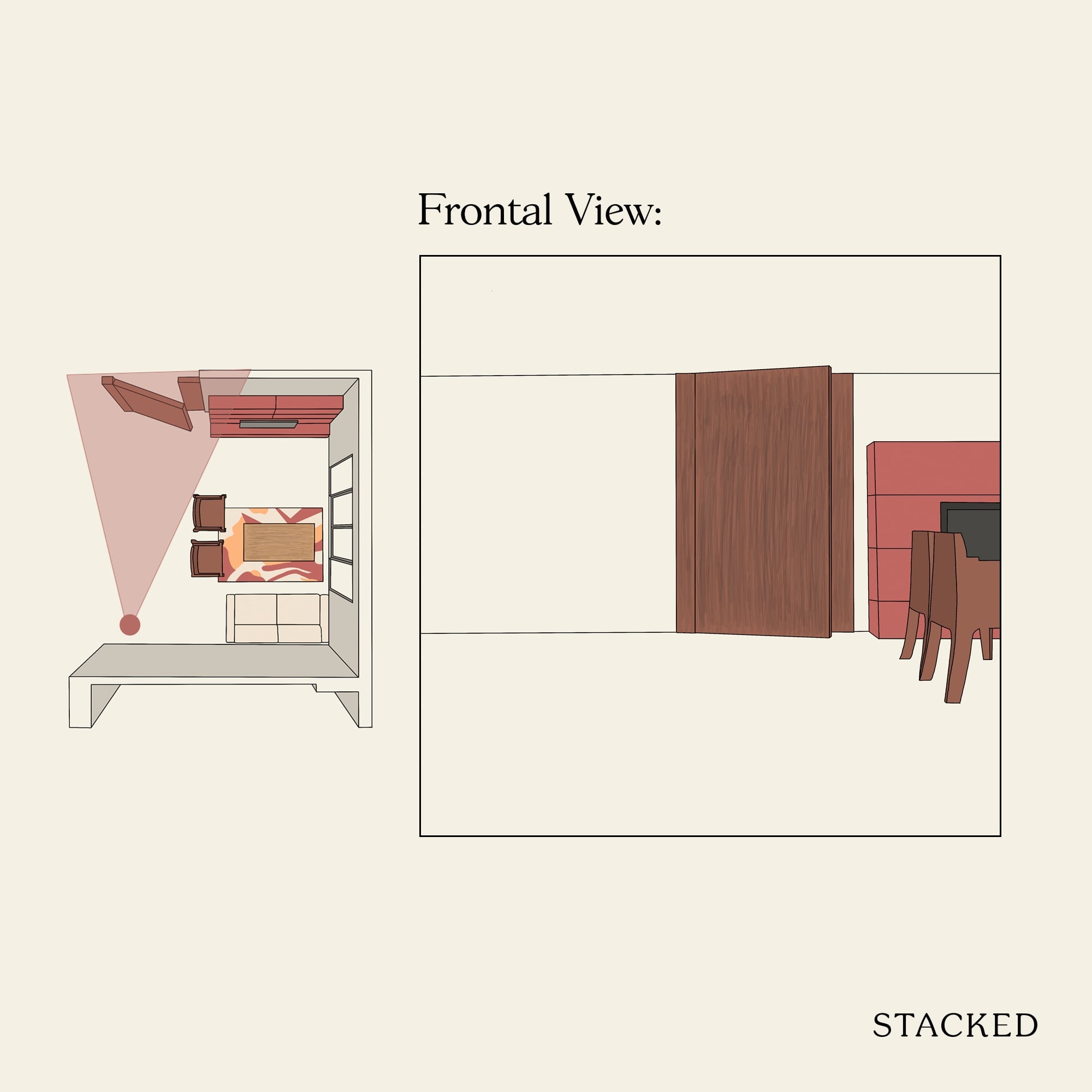
It may sound obvious, but since there is space here I would set up a permanent working desk instead (if you have long term work from home plans). While you could still very much opt for a semi-permanent working desk as illustrated before, this is simply another alternative if you are fortunate enough to have this extra space.
It is clear from the photo that the family enjoys having warmer colours, specifically red. Also, the set-up in the living room is rather pristine, so it would be ideal to keep the working area free from clutter to blend in well.
For the main desk, I’d propose a more integrated option with built-in storage options so that everything looks more organised. The entire set-up could be arranged to face the main entrance, so that you are able to work in privacy with your back to the wall. Not everyone likes the idea of a desk facing outwards as the wire setup could get messy, so you can easily revert back to it facing the wall instead.
To complement the rest of the living room, a prominent red chair with extra padding added for comfort is my choice of seat here.
If you are open to more decorative elements, you could also opt for some tealight candles and succulents. These added details can help to improve your mood, and also spruce up the living room when the desk is not in use.
I mean, it’s a simple setup – which frankly is usually a cinch when there is enough space.
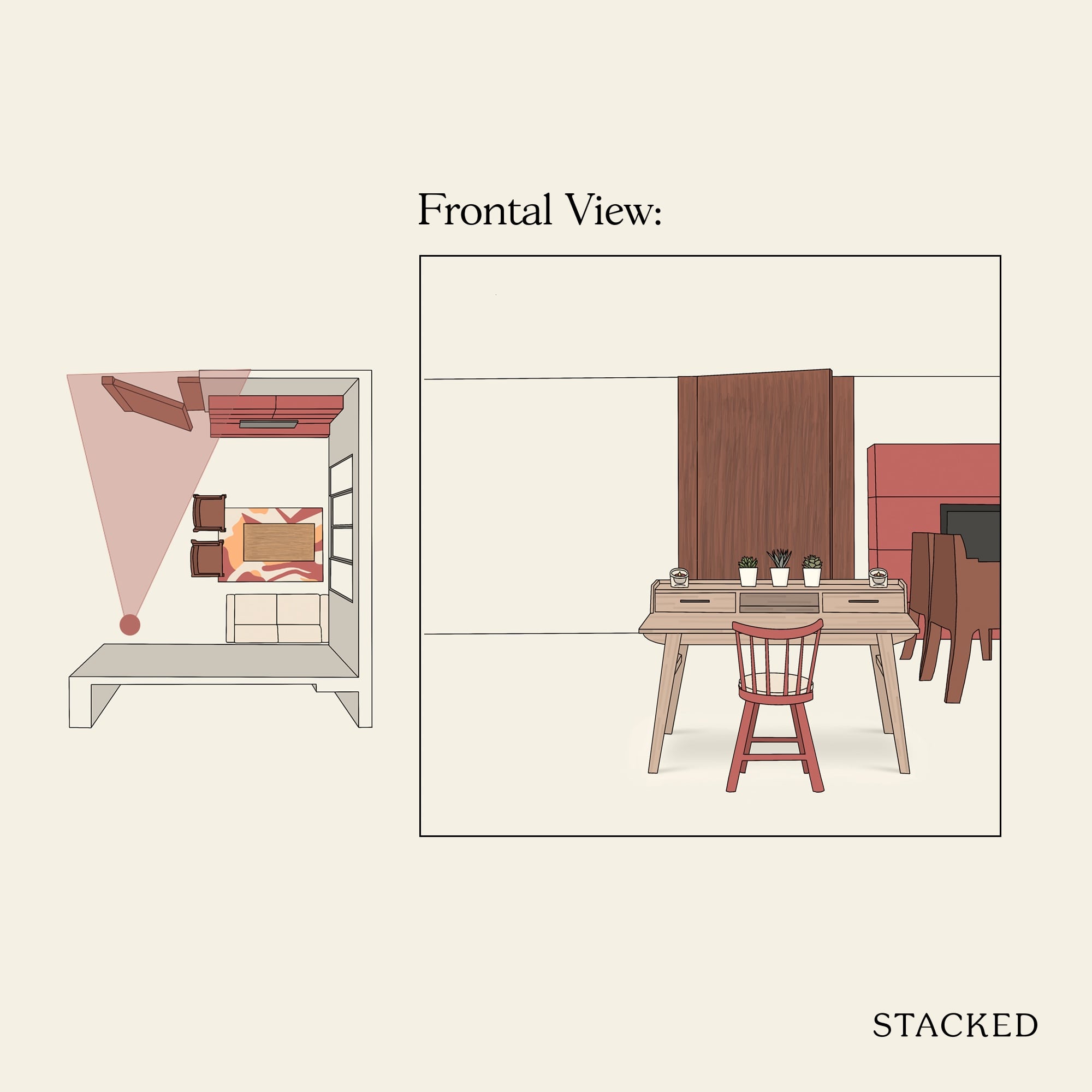
#3 Using Existing Furniture
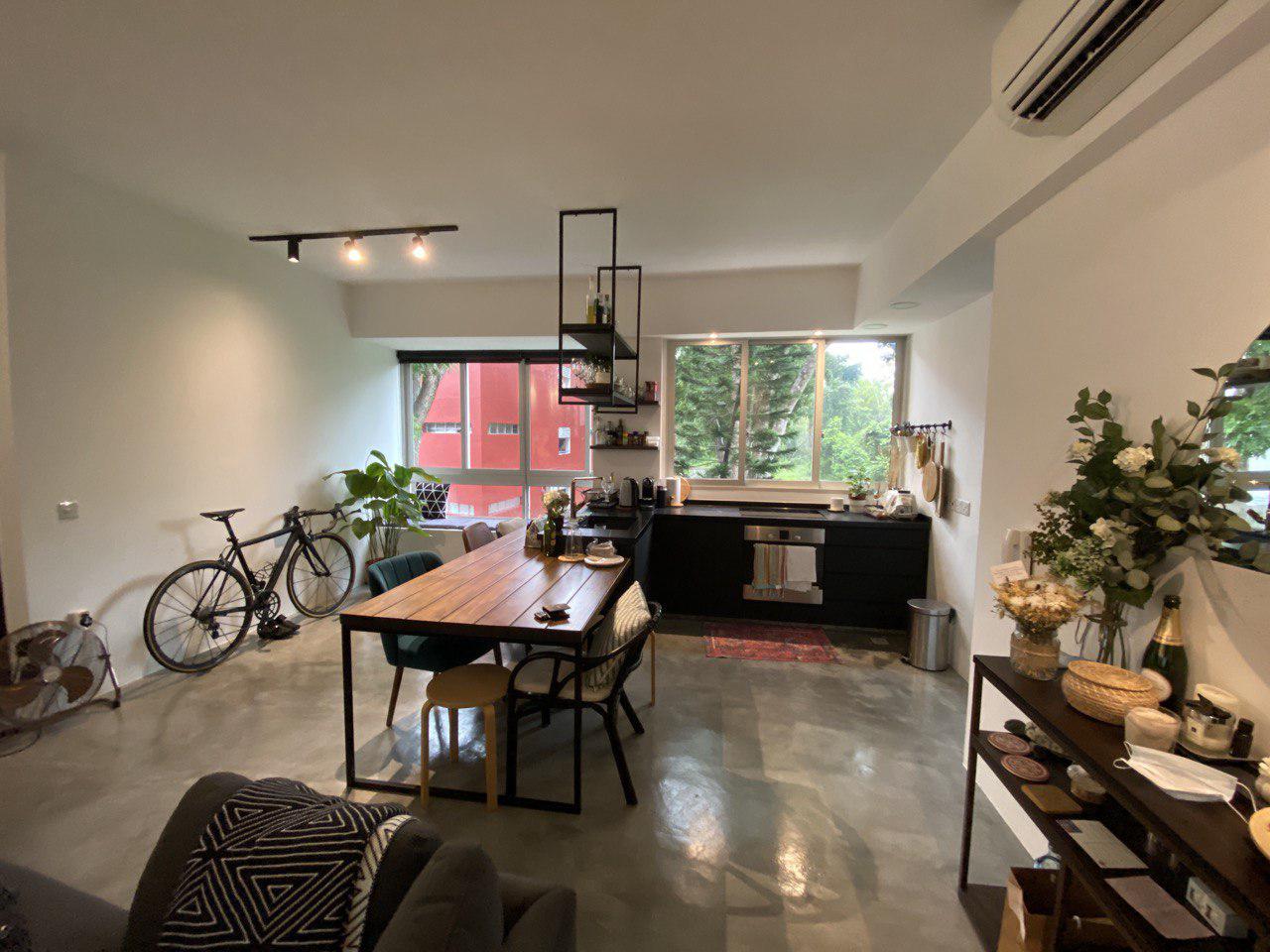

Lastly, the most fuss-free method to work from home is if your current home environment is conducive and flexible enough to accommodate an additional working space.
Our next case study is a family home located at Idyllic East. Unlike the previous unit, the owners of this unit have done extensive renovation work to remove non-structural walls and to add in customised furniture.
From here, you can see that this is one of those apartments with the “dreaded” bay window – something that many people feel is inefficient space. That said, with some comfy pillows this could easily be an alternative spot to do some reading or take work calls if necessary.
The dining table is also customised to be L-shaped, to hug the kitchen countertop. This design decision provides a normal space for this family to have their meals, but also some space for family members to work independently whilst looking into the kitchen.
If your home has already been retrofitted with customised furniture like this home, or if you believe that there is your furniture is being under-utilised currently, an efficient way to compromise is just to add in useful pieces of office appliances.
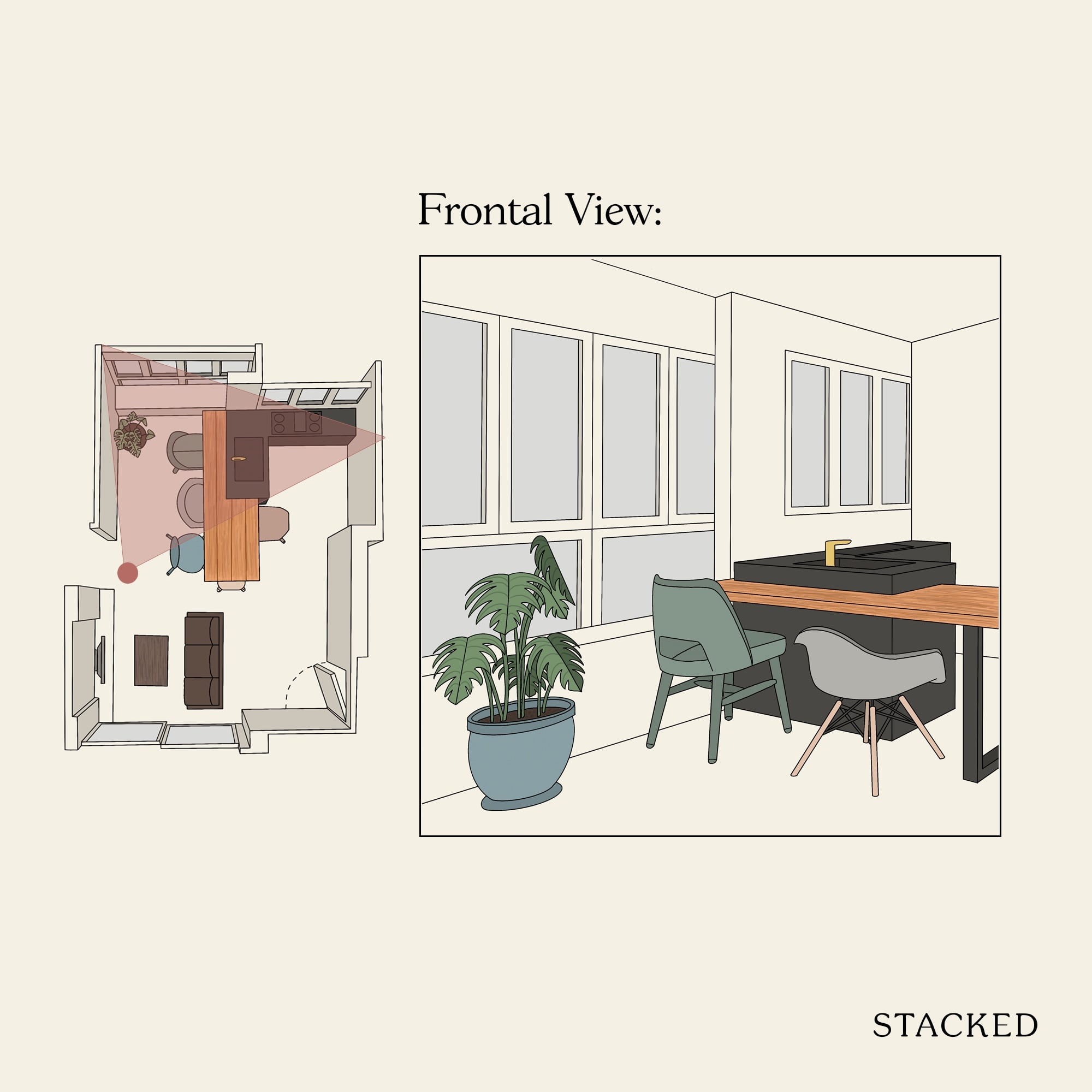
As there are intentional spaces carved out for work, as well as a bay window, they will be the spaces I would look at utilising. As the larger pieces of furniture (e.g. working desk and comfortable chair) are already present, our focus here will be to bring in some storage solutions and basic working essentials that follow the home’s existing industrial style.
The first item to add could be a small side table for some additional storage space away from the table top. A small wire shelf can then be placed on the table top for easy access to smaller pieces of stationery.
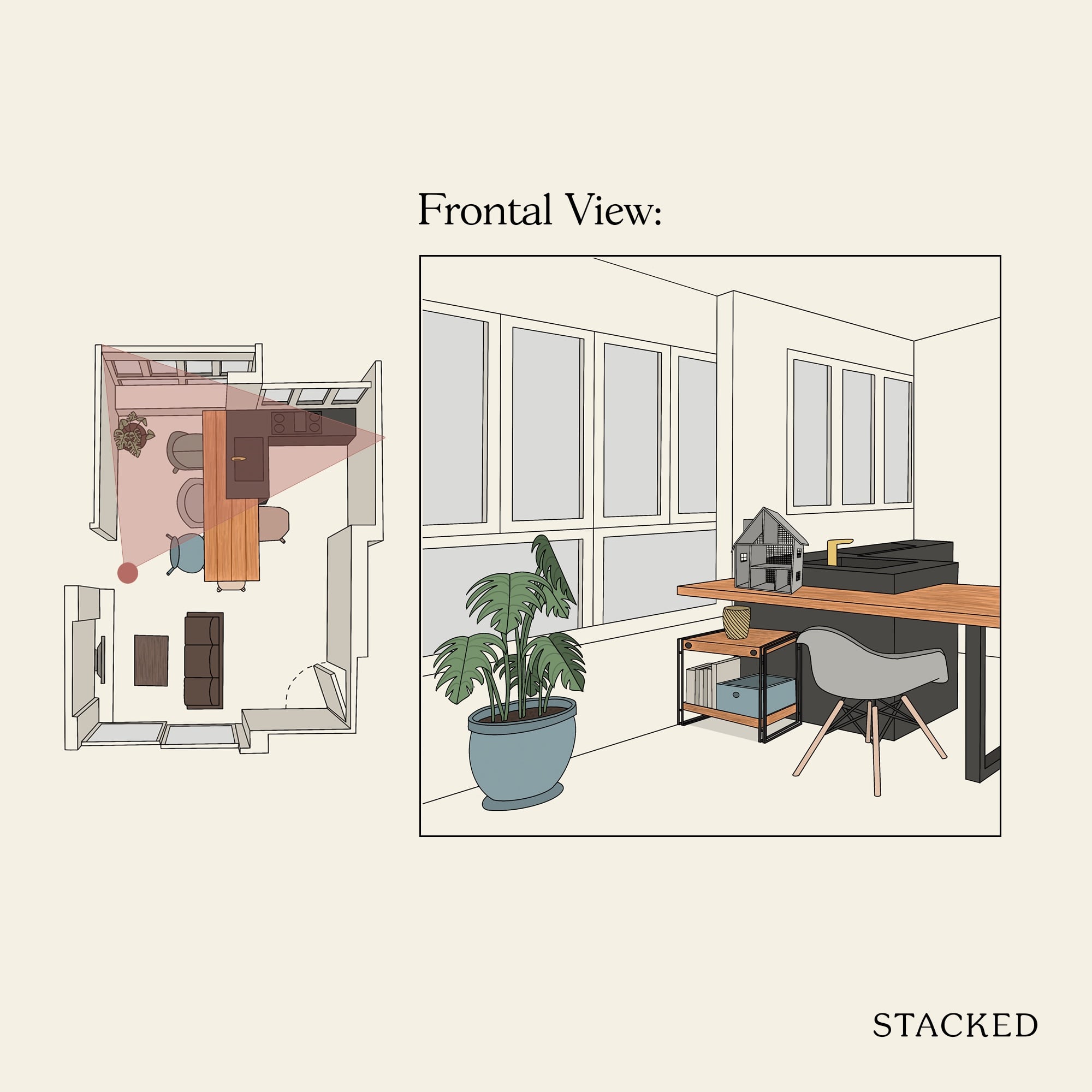
Closing Sentiments
For seasoned work-from-homes, you may have already configured a space for yourself. For those who are newly inducted to this flexible working arrangement, the first step to making this transition easier for yourself is really to set up a dedicated working space!
Regardless whether you have an eye for design, the process can be very simple. After all, all you really need to kickstart this space is a flat surface for writing or typing, a comfortable sitting area and ample light. Of course some planning needs to be done before the specific pieces of furniture are bought, but other accessories and details can be slowly added later on when you start to realise what are the essentials you need.
Working from home may not be everyone’s cup of tea, but it is ultimately something many of us cannot escape from, at least for now.
Illustrations by: Xiu Ying
If you’d like to get in touch for a more in-depth consultation, you can do so here.
Have a real estate question, or not sure what your options are? Email us at stories@stackedhomes.com.
Celine H
Celine is an architecture student who doesn’t want to be an architect. Passionate about spaces, the arts and cultural heritage, she now spends her days writing, seeing, feeling and exploring.Read next from Property Advice

Property Advice Should We Buy An Old 99-Year Leasehold Condo To Live In: Will It’s Value Fall When The Lease Runs Out?

Property Advice We Own A $800K 1-Bedder And A $1.1M 3-Bedder: Is It Possible To Upgrade To A 4-Bedder Condo?

Property Advice I Own A 55-Year-Old HDB Flat, But May Have To Sell — Can I Realistically Buy A Freehold Condo With $700K?

Property Advice We Own A 2-Bedder Condo In Clementi: Should We Decouple To Buy A Resale 3 Bedder Or Sell?
Latest Posts

Singapore Property News HDB Resale Prices Finally Slowed in 2025 — Will It Continue in 2026?

Singapore Property News Breaking News: District 23 Condo Sells Out In Under Two Years At $2,120 Psf Average

On The Market Here Are The Cheapest 3-Bedroom Condos in Central Singapore You Can Still Buy From $1.15M

Property Market Commentary Why The Singapore Property Market Will Be Different In 2026 — And It’s Not Just About Prices

Editor's Pick 2025 Year-End Review Of The Singapore Property Market: What The Numbers Reveal

Pro This 21-Year-Old Condo Didn’t Sell Out Initially, Yet Became A Top Performer

Editor's Pick How The HDB Resale Market Performed In 2025, And What It Means For 2026 Prices

Editor's Pick 4 Key Trends Reshaping Singapore’s New Launch Condo Market In 2026

Editor's Pick What I Only Learned After My First Year Of Homeownership In Singapore

Singapore Property News Why More Land Doesn’t Automatically Fix Housing In Singapore

On The Market Here Are The Cheapest 4-Room HDB Flats in Central Singapore You Can Still Buy From $490K

Pro How A Once “Ulu” Condo Launched In 1997 Became A Top Performer

Editor's Pick I Reviewed A New Launch 4-Bedroom Penthouse At Beauty World

Property Market Commentary When Renting In Singapore Is The Smarter Move — And Buying Can Wait

Editor's Pick Why Singaporean Families Are Looking At This Landed Enclave From Around $4M



